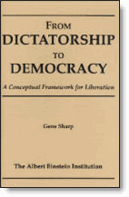The vintage video above is an excerpt from a 16 mm home movie showing President Franklin Delano Roosevelt on January 20, 1941, the day of his Third Inauguration. This silent color movie was shot by FDR’s son-in-law (Clarence) John Boettiger, who was then working for the Motion Picture Association of America, and the quality of this rare footage is quite outstanding. Watch the full 14-minute version here.
FDR can first be seen at 2:45, heavily supported by his oldest son James. This is one of the rare moments on film where Roosevelt can actually be seen walking, and it’s obvious how difficult it was for him to walk after polio left him paralyzed from the hips down in 1921. Next, FDR is seen on the presidential platform with his wife Eleanor and Chief Justice Charles Evans Hughes, taking the Oath of Office and giving his Inaugural Address. The full text of the address can be read courtesy of Yale Law School, and a high-resolution scan of the Inauguration Ceremonies Program has been uploaded by The Library of Congress.
FDR was the first American president to successfully run for a third term due to the precarious international situation in 1941. (Get the audio file of FDR’s State of the Union from January 6, 1941 here). After George Washington declined to run for a third term in 1796, it had become an unwritten rule to follow his lead. But it was not until the 22nd Amendment from 1947/1951 (“No person shall be elected to the office of the President more than twice.”) that this restriction was enshrined into law. FDR was, of course, elected for a fourth term in 1945, but died of a massive stroke on April 12, 1945.
By profession, Matthias Rascher teaches English and History at a High School in northern Bavaria, Germany. In his free time he scours the web for good links and posts the best finds on Twitter.


